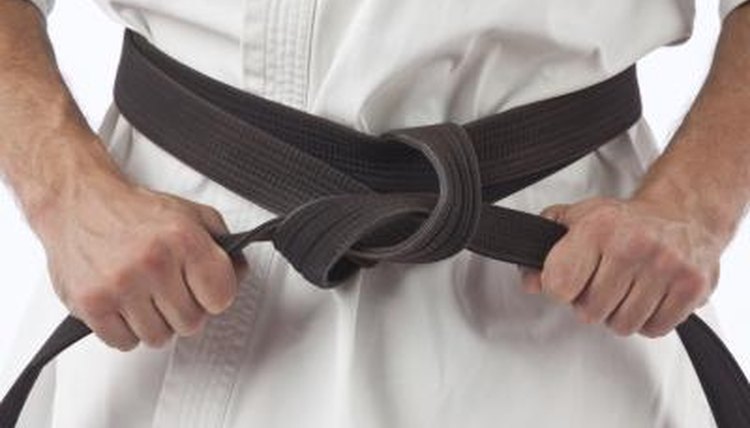Which Fighting Style Matches Your Personality?

Your fighting style should match your personality and body type if you are to become proficient. Martial arts like Shotokan Karate are best for strong individuals, while others, like Jujutsu, are best suited for more agile people. And some fighting styles, like Kenpo and Arnis, use weapons. When choosing a fighting style, consider your strengths and intentions: Are you more strong or flexible, and are you interested in fitness, self-defense or competition?
Aggressive Fighting Styles
Some fighting styles focus on using aggression and strength to overcome opponents. If you want a direct approach in your fights and want to build your strength and stamina, consider boxing, Kenpo, Karate, Tae-Kwon-Do, or one of the many variations of Kung Fu. Tae-Kwon-Do is a popular fighting style that originated in Korea and emphasizes fast kicks. Other direct fighting styles that emphasize strength include kickboxing, Brazilian jiu-jitsu, Muay Thai, and fighting styles like Krav Maga, an unarmed combat technique that originated with the Israeli army. Muay Thai originated in Thailand and uses kicks aimed at the knee, shin, and elbow to obliterate opponents.
Nonaggressive Fighting Styles
Some fighting styles emphasize gentleness and avoidance techniques rather than taking on an opponent head-on. If you would rather avoid a direct confrontation with an attacker, or if you are small and not very strong, consider fighting styles like Aikido, Judo, or Tai Chi Chuan. Aikido is a Japanese martial art that relies on reacting to an attacker by using throws and restraining techniques rather than punching or kicking. Because it relies less on speed and strength, Aikido is suitable for all ages and sizes of people. Tai Chi Chuan is a southern Chinese style that emphasizes slow, soft movements and concentration on the breath and technique.
Competitive Fighting Styles
Competitive fighting styles often focus more on technique than on the outright defeat of your opponent. Unlike street fighting, where nearly anything goes, competitive martial arts are governed by strict rules of permissible strikes. English boxing is one such competitive fighting sport, and is organized into several rounds that last from one to three minutes. Other competitive fighting styles include Tae Kwon Do, Karate, Jujutsu and Judo. Karate originated in Okinawa, Japan and is a weaponless fighting style that uses both punches and kicks. Jujutsu uses strikes, throws, kicking, and choking. Judo, which became an Olympic sport in 1964, developed from Jujutsu, but it uses only nonlethal grappling techniques and is well-suited to smaller individuals.
Fighting with Weapons
If you are interested in using weapons as part of your fighting style, the Filipino Arnis, Eskrima and Kali all emphasize the use of weaponry. These fighting styles use sticks, bladed weapons and improvised weapons as an extension to the body. Japanese Kendo uses bamboo swords to train fighters prior to graduating to metal swords. Kendo fighters clothe themselves in traditional garb that includes a full facemask and gloves. Fencing is another type of sword fighting that uses quick thrusts of the sword against your opponent. Fencing is a competitive sport that uses one of three weapons -- the lightweight foil, a heavier saber or the epee.
Discipline and Spirituality
Most serious martial arts forms include a healthy amount of discipline and spirituality. Martial arts dojos, or schools, traditionally follow certain forms of etiquette and protocol that include respect for the dojo, the instructor and senior students. If you enjoy a well-structured traditional environment, you may enjoy fighting styles like karate. If you prefer a modern approach, consider the newer forms like Brazilian Jujutsu.
Resources
Writer Bio
Karen S. Garvin has been a professional writer since 1988, when "Dragon" magazine published her first article. Her recent work includes encyclopedia entries on historical subjects. She holds a bachelor’s degree in communications and is pursuing a master's degree in European history. Her interests include photography, science, history and Steampunk.
